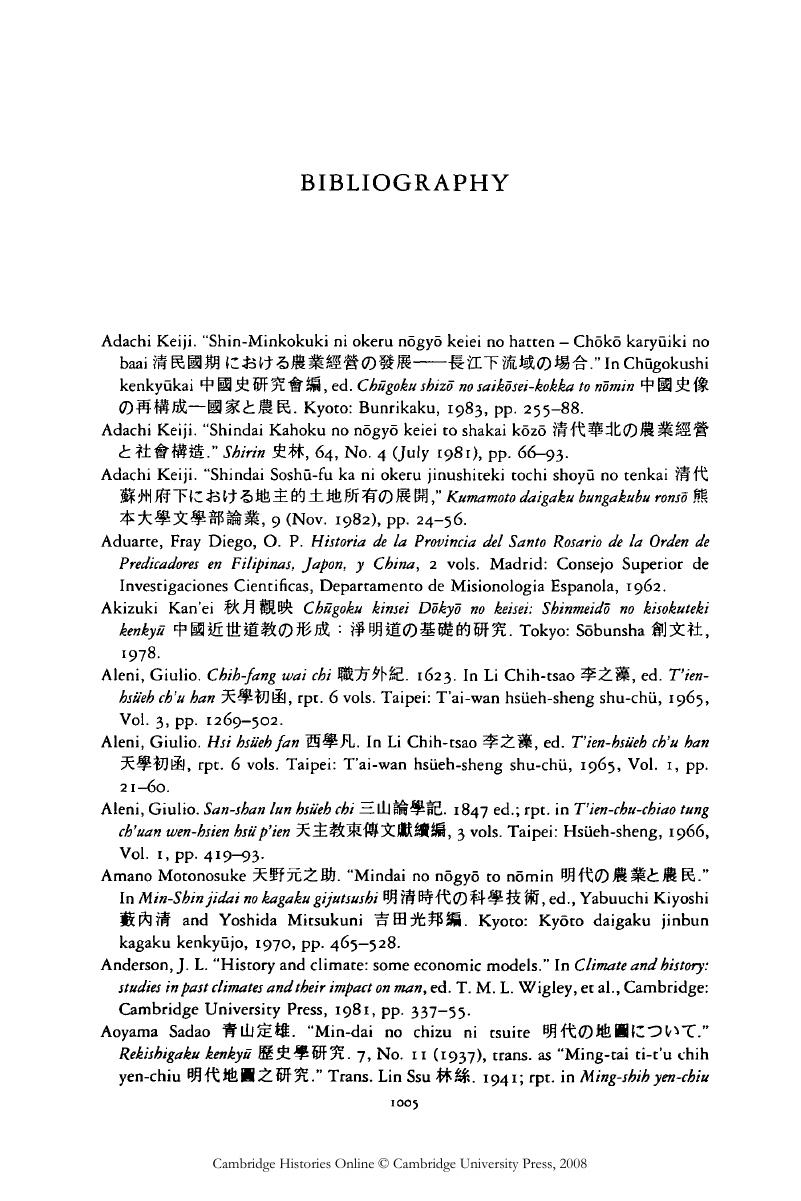Book contents
- Frontmatter
- Introduction
- 1 Ming government
- 2 The Ming fiscal administration
- 3 Ming law
- 4 The Ming and Inner Asia
- 5 Sino-Korean tributary relations under the Ming
- 6 Ming foreign relations: Southeast Asia
- 7 Relations with maritime Europeans, 1514–1662
- 8 Ming China and the emerging world economy, c. 1470–1650
- 9 The socio-economic development of rural China during the Ming
- 10 Communications and commerce
- 11 Confucian learning in late Ming thought
- 12 Learning from Heaven: the introduction of Christianity and other Western ideas into late Ming China
- 13 Official religion in the Ming
- 14 Ming Buddhism
- 15 Taoism in Ming culture
- Bibliographic notes
- Bibliography
- Glossary-Index
- References
Bibliography
Published online by Cambridge University Press: 28 March 2008
- Frontmatter
- Introduction
- 1 Ming government
- 2 The Ming fiscal administration
- 3 Ming law
- 4 The Ming and Inner Asia
- 5 Sino-Korean tributary relations under the Ming
- 6 Ming foreign relations: Southeast Asia
- 7 Relations with maritime Europeans, 1514–1662
- 8 Ming China and the emerging world economy, c. 1470–1650
- 9 The socio-economic development of rural China during the Ming
- 10 Communications and commerce
- 11 Confucian learning in late Ming thought
- 12 Learning from Heaven: the introduction of Christianity and other Western ideas into late Ming China
- 13 Official religion in the Ming
- 14 Ming Buddhism
- 15 Taoism in Ming culture
- Bibliographic notes
- Bibliography
- Glossary-Index
- References
Summary

- Type
- Chapter
- Information
- The Cambridge History of China , pp. 1005 - 1083Publisher: Cambridge University PressPrint publication year: 1998

